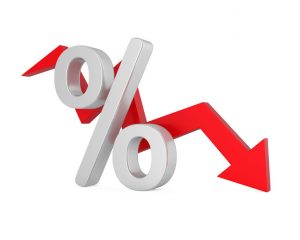
Presently, many articles say that the US economy is poised for rapid growth. The Federal Reserve has stated that it will keep interest rates low for the foreseeable future. Daily, the Biden administration announces new programs to raise taxes. These facts have conflicting impacts on the possible direction of long-term interest rates, and many business owners are unsure about the best time to lock in low fixed interest rates. Retail home refinance markets have slowed due to recent upticks in mortgage rates, but commercial rates on equipment loans and lines of credit have hardly moved. Considering these conditions, now is an opportune time to move on interest rate swaps.
What is a Swap?
Your bank line of credit, equipment financing, and real estate loans carry varying interest rates. Some credit may carry a fixed rate, but most have a variable rate with a floor but not a ceiling. Through your bank or other source of borrowing, you may be able to purchase a rate swap to lock in your interest rate at today’s historically low rates. Contact your lender to find out if they participate in swaps. If so, ask what their minimum size is for a swap.
With a swap, you have a contract to pay a fixed rate of interest on your borrowings. You still pay the lender the variable rate, but you may have an additional interest payment if market rates decline, or you may receive a credit to your monthly interest payment if rates go up. In other words, the lender gets paid if rates go down and you get paid if rates go up. Your cost is fixed over time. There are upfront setup fees for a swap, so take those into consideration as you look at total costs.
Why Do a Swap?
Businesses use swaps to lock in a favorable interest rate when they believe that rates are about as low as they will get for some time and rates will likely go up. This reduces cost over time and sets a known expense for budgeting. Management of risk and cost drive the final decision to swap. Businesses do not have to hedge all of their debt and may cover just a part of it, leaving some uncovered. For example, if a growing business will likely need a larger facility in three years, they might not hedge their real estate financing on existing property, so they don’t have the risk and cost of unwinding the swap on the future sale of the property.
What Can Go Wrong?
A swap is interest-rate hedging, meaning it assumes a direction for future rates compared to today’s rates. Some companies that were aggressive with swaps in 2018–2019 now face major payments if they unwind them now. Nobody saw a pandemic coming and interest rates falling to the present level. If they keep the swap in place, there is no penalty, but if they need to sell property or equipment, they could face a large payment to their bank to cancel the swap. On the other hand, if you have to unwind a swap three years from now, you could see a gain on the unwind.
How Do You Decide?
If you plan to hold equipment or real estate for at least five more years, hedging with a swap now is likely a good strategy for locking in costs and budget amounts. If you believe these assets could be sold or need to be replaced before then, look at each asset to determine its use to you. Assets that you are not likely to retain for five years can go to an unhedged group. Assets that you are likely to retain could go to a hedged pool. Hedging does not have to be 100% all or nothing, but the borrowed amounts need to be large enough to qualify for a swap.
C Squared is committed to helping business leaders transform challenges to successes. To see our approach in action, read our case study, From Struggling to Stellar: Maintaining Success During and After COVID-19, which describes how C Squared experts came alongside a struggling business and not only kept it afloat, but helped move it to the next level.
C Squared Solutions provides interim or fractional CFOs, COOs, and CEO advisors in nearly all industries. We analyze and advise on this issue frequently. Give us a call and we can offer more information and details. Reach out soon before the year gets away and interest rates start an upward creep.


